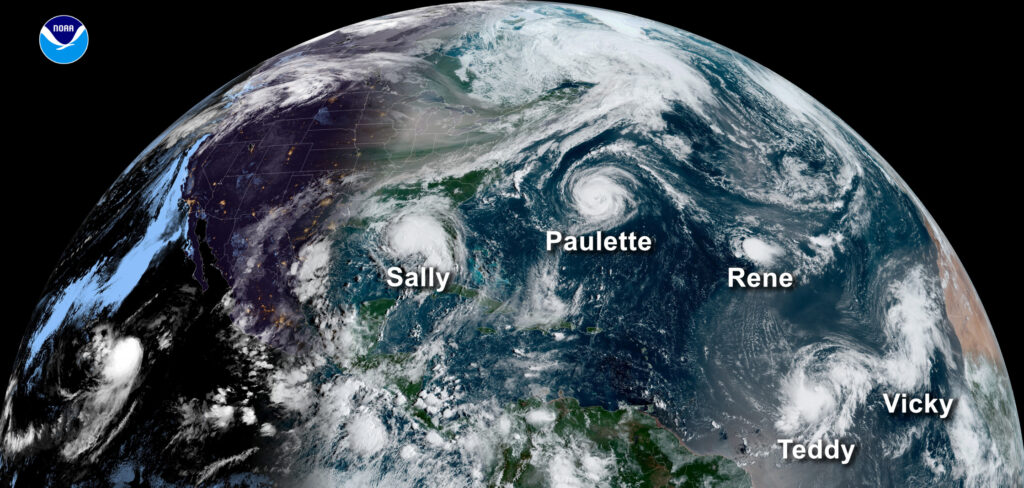Record-breaking Atlantic Hurricane Season Draws to an End
Posted
Last Updated
The extremely active 2020 Atlantic hurricane season is drawing to a close with a record-breaking 30 named storms and 12 landfalling storms in the continental United States. While the official hurricane season concludes on November 30, tropical storms may continue to develop past that day.
NOAA’s seasonal hurricane outlooks accurately predicted a high likelihood of an above-normal season with a strong possibility of it being extremely active. In total, the 2020 season produced 30 named storms (top winds of 39 mph or greater), of which 13 became hurricanes (top winds of 74 mph or greater), including six major hurricanes (top winds of 111 mph or greater). This is the most storms on record, surpassing the 28 from 2005, and the second-highest number of hurricanes on record.
“Throughout this relentless hurricane season, NOAA worked around-the-clock to provide critical data and reliable forecasts to our Nation’s communities in the path of devastating storms,” said U.S. Secretary of Commerce Wilbur Ross. “The services provided by NOAA, alongside our emergency management partners, undoubtedly helped save many lives and protect property.”

The 2020 season got off to an early and rapid pace with a record nine named storms from May through July, and then quickly exhausted the 21-name Atlantic list when Tropical Storm Wilfred formed on September 18. For only the second time in history, the Greek alphabet was used for the remainder of the season, extending through the 9th name in the list, Iota.
“The 2020 Atlantic hurricane season ramped up quickly and broke records across the board,” said Neil Jacobs, Ph.D, acting NOAA administrator. “Our investments in research, forecast models, and computer technology allowed forecasters at the National Weather Service, and its National Hurricane Center, to issue forecasts with increasing accuracy, resulting in the advanced lead time needed to ensure that decision makers and communities were ready and responsive.”
READ MORE

